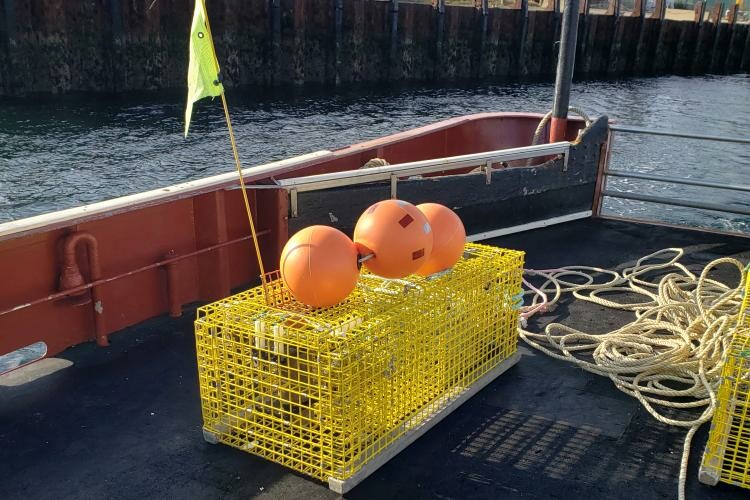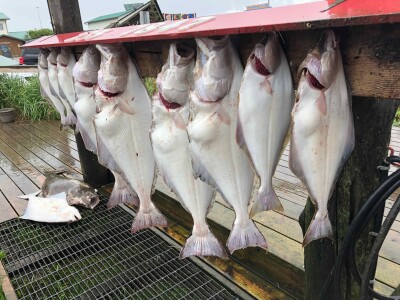A full transition to on-demand or ‘ropeless’ lobster gear in Massachusetts could cost fishermen as much to use the new equipment as buy it, according to a report recently completed for the state Division of Marine Fisheries.
Titled “Estimating the Costs of Using On-Demand Gear in Massachusetts Lobster Fisheries,” the paper is “a deep dive into the financial impacts of using the gear onboard lobster fishing vessels,” according to state officials.
Ropeless gear would eliminate vertical lines between lobster traps and marker buoys on the surface, with the goal of reducing the danger of entanglement with highly endangered North Atlantic right whales. “On-demand” refers to technologies that enable lobstermen to summon buoys anchored on the seafloor when it’s time to retrieve the gear.
The study was written by Noah Oppenheim, a natural resources consultant and owner of Maine-based of Homarus Strategies LLC; professor Robert Griffin of the School for Marine Science & Technology at the University of Massachusetts Dartmouth; and professor Andrew Goode of the University of Maine.
Their work “presents a new model that can be used to estimate these operational costs, providing important information that will assist in consideration of fishery management scenarios involving entanglement risk-reducing fishing gear,” according to the Massachusetts Division of Marine Fisheries.
“Because some types of on-demand gear require significantly more time to operate than traditional vertical line gear, the costs of using it were shown to be as high as the purchase price of the gear itself in many cases,” the state agency said.
“The study estimates that a full transition to on-demand gear in Massachusetts lobster fisheries in the second half of the last decade would have resulted in a $40 million decline in lobster fishery revenue each year, or 3.5 million fewer pounds of lobster landed.”
The cost effects would be felt most significantly by the smallest lobster vessels that operate close to shore, the analysis found.
According to the report’s summary, “Our simulation results indicate that the complete conversion of Massachusetts lobster fishing vessels to using the type of on-demand gear we included in our model during the 2015-2019 baseline period would have resulted in the following operational and economic outcomes”: >
- The average per-trap throughput rate (the time required to haul, sort catch, and redeploy) would have increased by 1.82 minutes across all Massachusetts lobster fishing vessels, inversely proportional to the number of traps fished per trawl;
- The average annual net revenue across all Massachusetts state and federal lobster fishing vessels using on-demand gear, assuming the gear would be acquired using a low-cost loan, would have been -$29,300, a decrease of $47,263 per vessel on average;
- The average annual net revenue across all Massachusetts state and federal lobster fishing vessels using on-demand gear, assuming all on-demand gear acquisition costs were subsidized, would have been $1,377, a decrease of $16,586 per vessel on average;
- The average Massachusetts statewide lobster landings value would have decreased by $40.81 million;
- Lobster landings in Massachusetts would have been reduced by 3.74 million pounds.
Overall, these results indicate that the operational time costs and resulting decreases in catch revenue associated with the decreased efficiency of the type of on-demand gear we used to parameterize the model could be significant, reaching a similar level of cost to the acquisition of the gear itself for some classes of lobster fishing vessel.







